The subtleties of growing spinach on the windowsill: all the steps and useful tips
Several types of fresh herbs are available throughout the year, even in winter. Growing spinach from green seeds is within the power of every gardener. Spinach is a valuable product, irreplaceable for dietary and children's menus. This plant is unpretentious, takes root on any soil, withstands cold snaps and yields a harvest even in cool conditions.
Characteristics of the plant, spinach varieties for the windowsill
Spinach is an annual herb that produces juicy and highly nutritious leaves. They contain minerals and vitamins in high concentration, and the calorie content is very small - 23 kcal per 100 g. In spring and summer, spinach feels good in the garden, and in room conditions it can grow all year round.
Early maturing, often hybrid spinach varieties with resistance to greenhouse conditions are selected for home cultivation.
The following varieties have good taste characteristics:
- Fat-leaved is a spinach variety with soft and embossed foliage. Rosettes of leaves reach 25-30 cm in volume. Greens are edible within 25-40 days after sprouting.
- Giant - leaves of medium size, have a mild taste. This variety is used for conservation and is recommended for feeding children. The leaves are edible 30 days after sprouting.
- Matador is a variety with smooth grayish leaves that ripen in 35-50 days. This type of spinach is adapted to unfavorable conditions and is rarely exposed to pests.
- Victoria - this species has rounded leaves collected in a small rosette. An early ripening variety, the harvest ripens in 25-40 days. Due to its compactness, it is one of the most popular varieties for growing on a windowsill.
- Strawberry is interesting for its light berry aroma emanating from the bush. Both leaves and fruits are edible. One of the earliest ripening varieties, 2-3 weeks are enough for it.
- Strong is a mid-season variety that gives a large yield under conditions of regular watering. Late fires flower arrows. Suitable for outdoor cultivation.
Advice! If spinach is grown for the first time, then gardeners recommend sowing several varieties at once for testing.
Greens differ not only in leaf size and ripening time, but also in taste. The crop is harvested within 2 months, during which time you can decide which variety to give preference to in the future.
Sowing preparation
Spinach seeds are medium in size, rounded, light brown. Before planting, they are soaked in warm water for a day, since the dense outer structure will not allow them to germinate dry. Then the seeds are moved for 2-4 hours in a weak solution of potassium permanganate for disinfection, and before sowing they are dried with a paper towel. If the material has not been soaked, then it is necessary to water the soil abundantly after planting. Gardeners recommend not to ignore soaking, as the percentage of germinating seeds increases.
The containers are selected in accordance with the further cultivation of seedlings. If it will be located on the windowsill, and the crop will be harvested at home, then long, wide and shallow pots are taken. If the sprouts dive into open ground, then smaller containers are taken. The material of the pots for growing does not matter much, ordinary flower pots will do. A prerequisite is drainage holes at the bottom to drain moisture.
Spinach is an unpretentious plant, it takes root in any soil.The only rule: there should be no peat in the soil. Increased acidity negatively affects the quality of the crop. Self-preparation of soil for sowing seeds: 1 part of coconut fiber + 2 parts of vermicompost. Coconut fiber is sometimes substituted for perlite. To exclude diseases of seedlings, the soil must be calcined in the oven or poured with a solution of fungicide or potassium permanganate.
Advice! To harvest throughout the year, seeds are sown every two weeks.
Landing
Stages of sowing spinach seeds:
- A drainage layer of broken brick or expanded clay is laid in the prepared container.
- The treated soil mixture is poured onto the drainage.
- Spinach seeds are buried 1–2 cm in the ground.
- All plantings are covered with soil.
- Immediately after sowing, the soil is slightly moistened. This will make the entries appear faster.
- The box is covered with plastic wrap or a transparent lid and moved to a bright place.
Advice! When planting seeds in a common pot, it should be borne in mind that each plant needs at least 8-10 cm of soil for normal development.
Seedling care
The first shoots should appear on the surface a week after sowing, if the box was stored at a temperature of + 15-17 ° C. When caring for the seedlings, several conditions must be observed: abundant watering, maintaining air humidity and sufficient light.
Spinach likes good lighting, but does not tolerate drying out of the soil. It is allowed to place the flowerpot after planting on the south side, but away from heating appliances. To maintain moisture, the seedlings are sprayed with settled water from a spray bottle. The frequency of leaf wetting is once a day, in dry times - twice. If the room is too hot, the spinach will wilt and form seed pods faster.
Watering the spinach should be moderate. The soil should not dry out, but there is no need to overfill the root system. Each new introduction of moisture is carried out with drying of the top layer of the soil. Water is taken settled, at room temperature. After each watering, the soil is slightly loosened so that air flows freely to the root system.
Young seedlings are afraid of the scorching sunlight, so at noon it is recommended to shade the place where the box is located, otherwise the delicate leaves will burn. In winter, daylight hours are extended with a UV lamp for at least 2 hours in the morning or evening. The optimal number of hours of daylight hours is 10-12. The lamp is installed at a height of 50-60 cm above the box.
Advice! In cloudy weather or in winter, the lamp can be left on all day until 2 pm.
The optimum temperature for growing healthy and tasty leaves is from +14 to +18 degrees, so that spinach will be comfortable both indoors and on a warmed balcony. The plant produces crops even at temperatures of + 7-10 degrees, but under such conditions, leaf growth slows down. At temperatures above +20 degrees, early appearance of the peduncle is possible.
From the first shoots, it is recommended to feed spinach for friendly growth. Liquid mineral fertilizers are applied. However, if the soil at the time of planting the seeds was sufficiently fertile, feeding the spring seedlings will not be required. Excess nutrients affect the taste of spinach leaves.
Growing greens takes about 2 months. If you plan to re-grow a crop in a pot, then organic fertilizer should be applied to the soil.
Outdoor cultivation
Growing spinach in the open field is convenient when a large amount of harvest is required, and the window sill does not hold large boxes. When planting, it should be borne in mind that daylight hours longer than 14 hours contribute to the rapid formation of a peduncle, and such plants are no longer used for food.
More often, spinach in the open field is grown directly from seeds, and not by seedling. Sowing is done around mid-April. Young sprouts can withstand frosts down to –8 ° C.If sharp cold snaps occur in the spring in the region, then the seedlings are covered with non-woven material.
How to sow spinach seeds outdoors:
- As for sowing seedlings, seeds for soil are soaked in a solution of potassium permanganate.
- Before planting, spring soil may be fertilized with nitrogen.
- The seeds are immersed in the ground to a depth of 1.5-3 cm. A distance of 8-10 cm is observed between them. It is better to leave about 30 cm between the rows.
Sowing spinach is possible in summer (at the end of June), and in warm regions - until mid-September.
Caring for spinach outdoors is practically the same as caring for seedlings on a windowsill. The plant also needs abundant watering, loosening the soil and applying fertilizers.
The hardened seedlings from the windowsill move into open ground when the soil on the site warms up well. At first, young plantings need to be sheltered from the spring sun and protected from daily temperature changes. For this, arcs are installed and covered with agrofibre.
Growing problems
If the seedlings are stretched out, then you need to increase the amount of light. It is better to move boxes from north, east and west windows to south or install a lamp for additional lighting. If spinach develops extremely slowly, the sprouts have small and weak leaves, then fertilizer should be added to the soil.
Diseases of spinach seedlings:
- Fusarium is a fungal disease. It manifests itself as darkening of the leaves and a stop in their growth. The lower leaves turn yellow and die off.
- Anthracnose - brown or grayish spots caused by a fungus.
- Root rot is another fungal disease that affects mainly young plantings. It appears as spots with a fungal formation in the center.
If the fungus has infected a small part of the plant, then it is removed, and the seedlings are treated with a fungicide solution. If most of the spinach is damaged, it is best to dig it up and plant new seeds.
Important! The leaves of the affected plant are not edible! Throw them out.
Seedling pests appear only in open ground; they rarely settle on room seedlings.
Examples of pests:
- caterpillar scoops,
- aphid,
- bear,
- beet fly.
To expel the pest from the plantings, the bed is treated with a solution of the substance anabazine sulfate: for 10 liters of water - 15 cm3.
When and how to harvest
The crop is harvested with the appearance of 5-7 leaves on the sprout, while plucking all the leaves at once, leaving a rosette, or part of them. Experienced gardeners recommend cutting off no more than half of the crop in one approach: this way the formation of leaves will last for several weeks.
To separate the sheet, it is broken off or cut off. It is not recommended to pull and tear off sharply so as not to damage the entire plant.
Harvesting takes place in the evening. It has been noticed that the leaves plucked during the day wither quickly. If the spinach is grown outdoors, the leaves are not cut off during or after rain, as they quickly rot when wet.
After the appearance of the peduncle, the taste of the leaves changes, it becomes rancid.
Storage
Fresh spinach can be stored for 5-7 days at temperatures between 0 and +1. If the leaves are placed in the refrigerator, they are wiped dry.
Advice! The sooner the torn leaf is eaten, the more benefit it will have to the body. Long-term storage of greens loses valuable substances.
To preserve the crop for a long time, it is dried, frozen or canned:
- For freezing, the leaves are washed, dried, the roots are cut off. The spinach is frozen whole or sliced. A good option is to blanch the herbs (pour over with boiling water) before moving to the freezer.
- Spinach leaves are also stored as mashed potatoes: they are washed, immersed in a blender and minced.
- The spinach crop is dried in a shaded dry place, preferably outdoors. After a few days, the leaves are transferred to tissue bags and sent to storage.
- Salting is not the most popular way to prepare spinach. Peeled leaves are placed in jars and sprinkled with salt.The product is stored strictly in the cold and for a short time.
Why spinach is good for you
Spinach is useful not only fresh, but also as a winter preparation. This greens is a source of fiber, vitamins A, group B, C, E, K, P, PP, trace elements (iron, potassium, magnesium), organic acids, flavonoids and vegetable protein.
Spinach is useful for children as a preventive measure against rickets, has a positive effect on stomach health, stimulates the intestines, improves blood composition, and much more. Spinach saturates the weakened body with vitamins and is an integral part of the dietary menu.
If you want to easily grow a healthy and cute plant, then there is no better option than spinach bushes. The greenery of this plant enlivens the room, looks neat on the site, and most importantly, it is a tasty and valuable product for health.
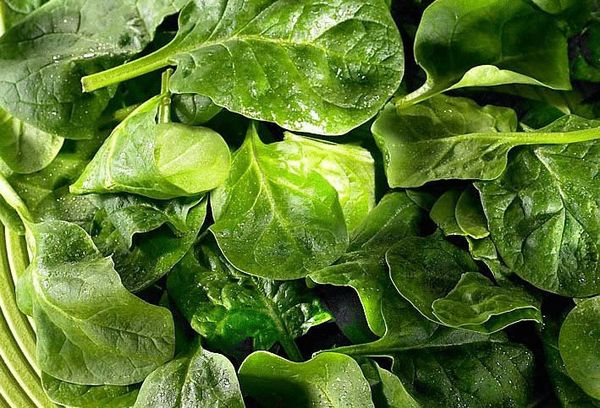
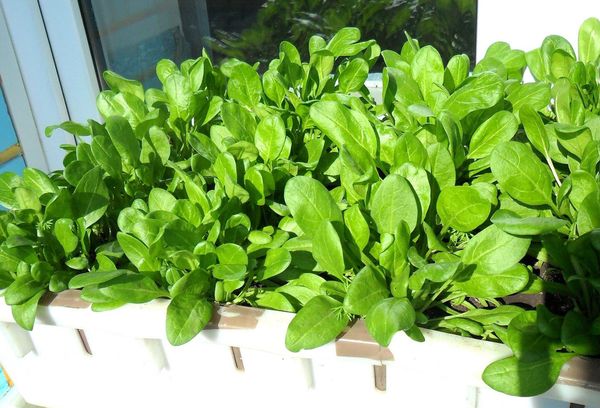
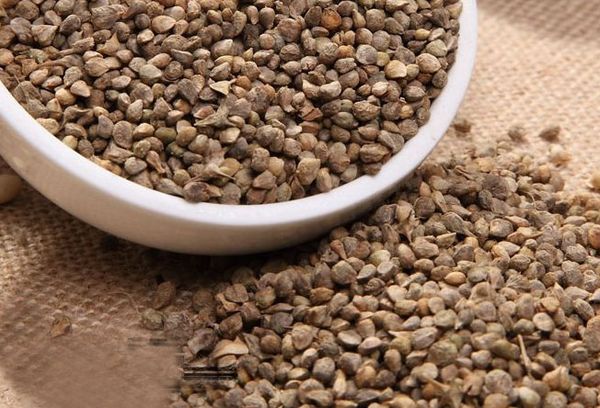
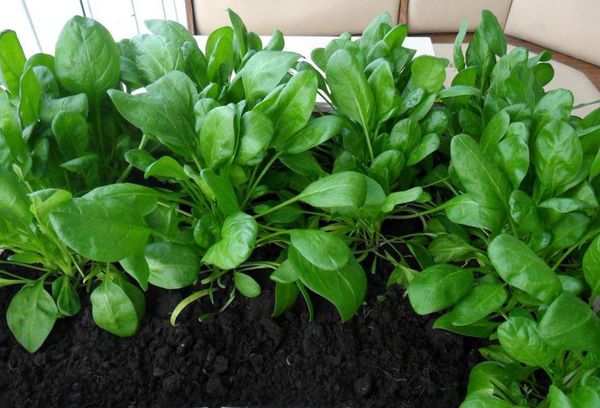
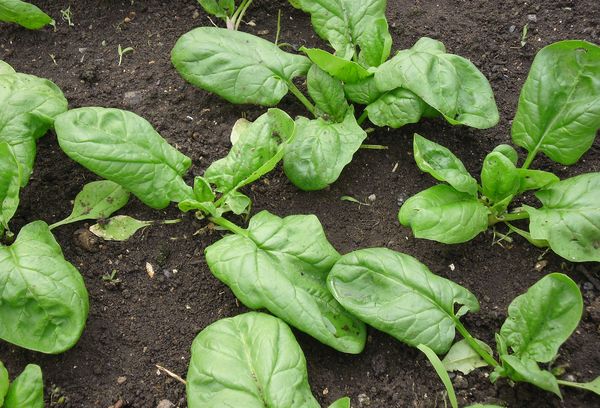
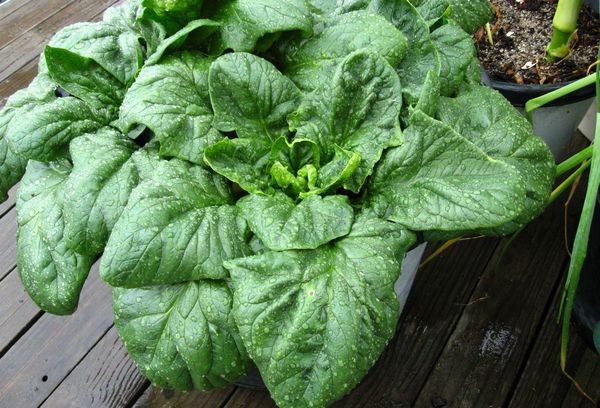
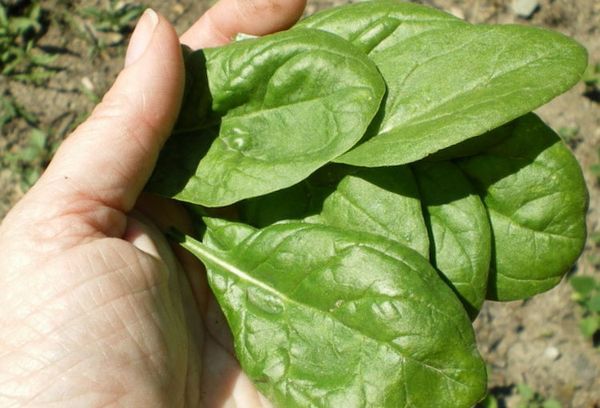
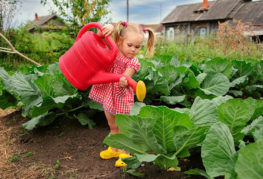
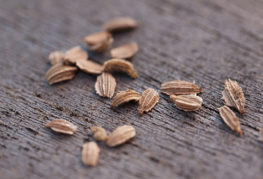
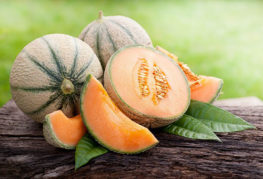
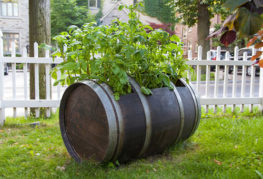
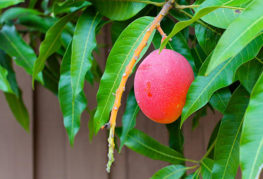
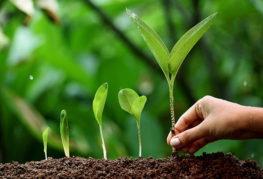
and will be published shortly.